Hamlin injury shows why DIAA pushing to mandate athletic trainers at Delaware schools
- Oops!Something went wrong.Please try again later.
- Oops!Something went wrong.Please try again later.
When the play ended near the Newark High sidelines, one of the Yellowjackets’ football players did not get up as others did.
Coaches walked over to check on him and there was an awkward, what-do-we-do-now moment when he did not get up and his condition required assessment.
Typically, Neil Turner, Newark’s long-time certified athletic trainer, would have quickly tended to the player and provided aid. But Turner, on this sunny Saturday last October, had been summoned to work Christina School District cohort Christiana’s home football game against Dickinson.
Before long, an athletic trainer and physician representing Delaware Military Academy came across the field and examined the Newark player, helped him to his bench and provided treatment. But the situation clearly illustrated the importance of having an athletic trainer on each sideline, especially for collision sports such as football, and the frequent need for timely, earnest and knowledgeable medical attention.
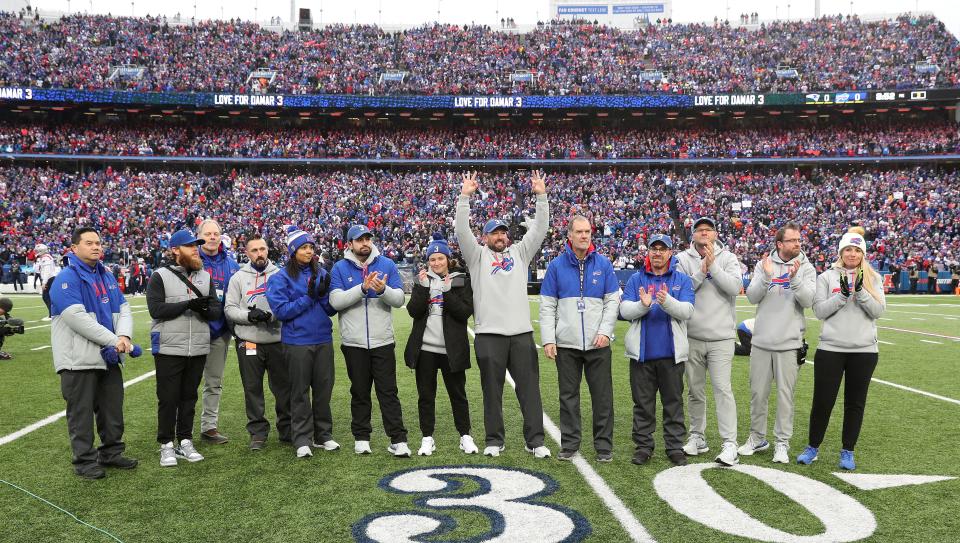
At the time, because of the difficulty the district was having filling athletic-training positions, Turner was actually serving in that role at all three Christina schools – Newark, Christiana and Glasgow.
“The vendor did not have enough people to fill the positions,” said Kim Habbert, the district’s athletic director. “We outsourced it [through ATI Physical Therapy] and they couldn’t fill it. We did the best we could staffing athletic events with nurses and other medical personnel.”
The value of certified athletic trainers and other medical personnel at football games became very clear on Jan. 2 in Cincinnati. Buffalo Bills safety Damar Hamlin suffered cardiac arrest after tackling Bengals receiver Tee Higgins in an NFL game. His life was saved by the actions of health-care pros who provided cardiopulmonary resuscitation and an automated external defibrillator.
The far-from-ideal setup Christina schools and others in Delaware without certified athletic trainers cope with is why the Delaware Interscholastic Athletic Association has been pushing the state government to require high schools that field athletic teams to have a certified athletic trainer on staff, much the way state laws require a school nurse.
“Schools would never not have a school nurse. Never,” said Mandy Minutola, the director of athletic training for Premier Physical Therapy and Sports Performance, which provides certified athletic trainers for several high schools.
EAST SIDE STORY:There won't be another state champ like 1973 Howard basketball
“Why do we not have a medical professional who is there for the most active time? You’re talking contact sports. You’re talking about collisions. Why do we not mandate that somebody’s there for them?”
Huggins said Christina recently decided to hire a full-time trainer employed by the district at each of its three high schools, and those positions should be filled before the conclusion of winter sports. Previously, it had contracted out with ATI.
That’s a positive outcome the Delaware Athletic Trainers Association would like to see repeated.
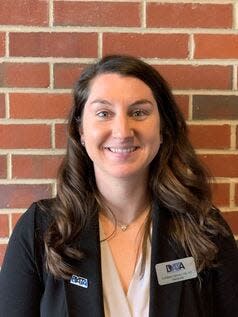
“The DATA’s mission is, we want to ensure every Delaware student-athlete has access to comprehensive athletic training services,” said DATA president Kathleen Kenney, the district-employed athletic trainer at Laurel High. “ . . . I think what we saw in the Buffalo Bills situation was the training we have as athletic trainers prepares us for those situations.”
Dr. Bradley Bley, a sports medicine specialist who chairs the DIAA Sports Medicine Advisory Committee (SMAC), is a Buffalo native and Bills fan who, watching the game on TV, saw Hamlin collapse.
“I did not like the way he went down,” said Bley, who quickly sensed a dire cardiac situation. “ . . . Luckily, things turned out well.”
The positive outcome resulted from the reactions of trained medical people providing what turned out to life-saving assistance.
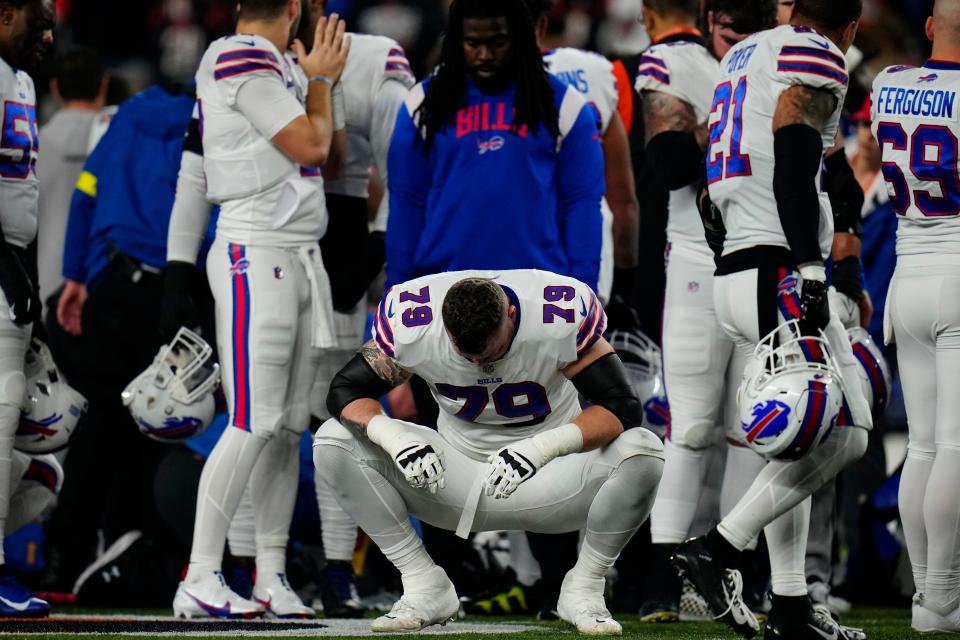
Athletic trainers working a high school game aren’t likely to see a heart-related event. But they could. And they do encounter enough serious situations, from possible spinal injuries to concussions to compound fractures to simple bumps and bruises, that their presence is imperative, Bley said.
Efforts by the DIAA’s SMAC to mandate an athletic trainer be on staff at all First State high schools actually sprung, Bley said, from the COVID-19 pandemic, the strain it put on medical and educational institutions and an increased attention on health-care needs.
Ideally, a high school’s athletic trainer isn’t there just for games. He or she is there before, during and after practices as well and treats student-athletes in all sports. That allows them to provide evaluation, diagnosis and advice on prevention, treatment and rehabilitation, as well as direct those with injuries toward the proper specialists.
Boys basketball and boys lacrosse, along with football, are deemed “high risk” sports because of the forceful contact frequent in each, with data in Delaware also listing wrestling as a sport with higher injury rates. Numerous others, including soccer, fall under the “moderate risk” heading.
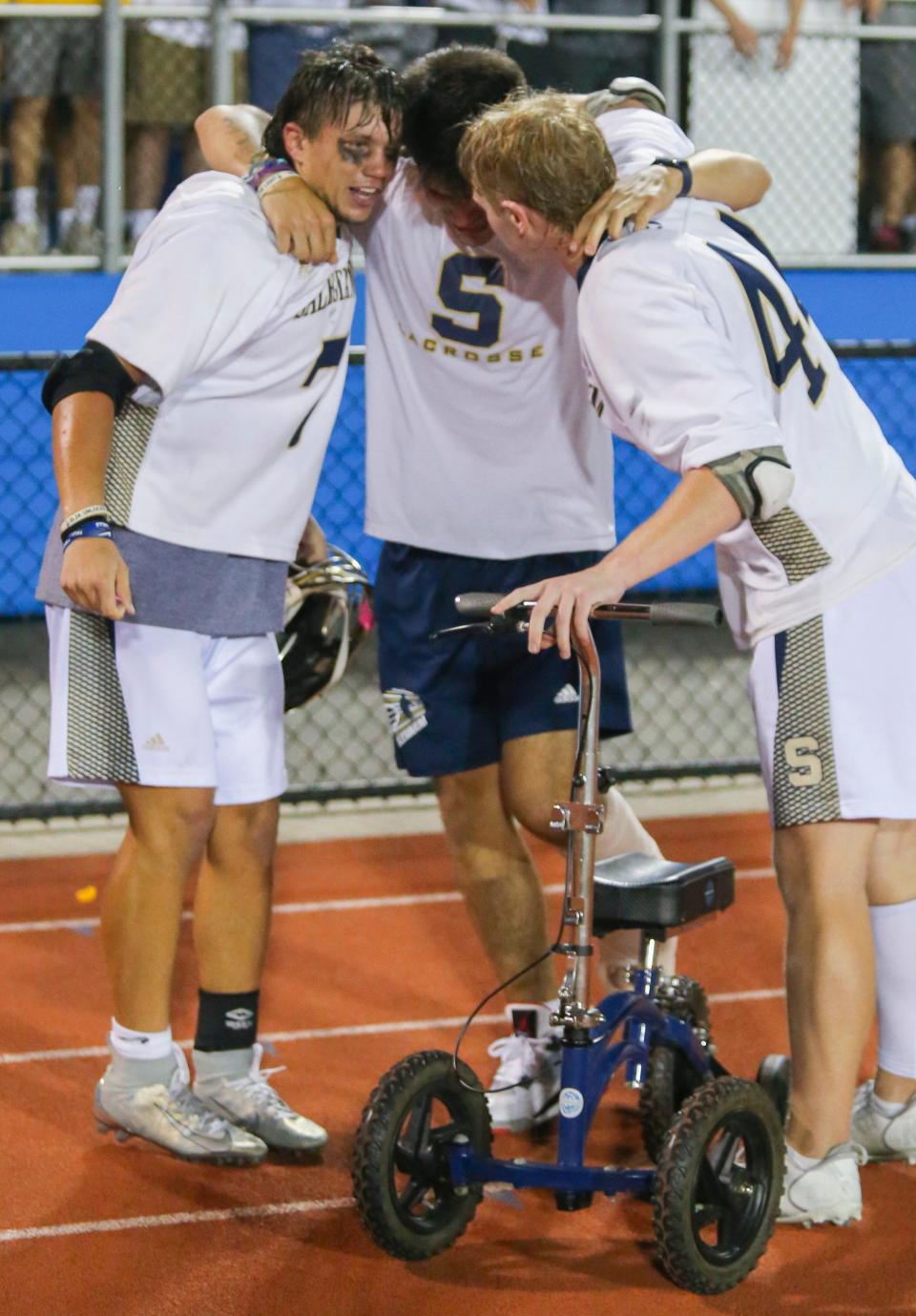
Presently, the only state requirement regarding the health and safety of student-athletes from a staffing standpoint is DIAA regulation 3400-7.0. It covers only football, stating a qualified healthcare professional approved or appointed by the school’s administrative leader must be present at all games in which the school participates.
“We believe that having full-time trainers will actually help decrease families’ health-care costs,” Bley said, adding it reduces the necessity for urgent-care and emergency-room visits and also provides an outlet for rehabilitation.
“The Department of Education is supportive of it,” he added. “It all comes down to funding.”
NEXT STOP:College signings, commitments for Delaware high school athletes
Minutola echoed Bley’s comment regarding funding concerns, adding “we’ve gotta find it,” referring to the money to pay athletic trainers.
“Sometimes, we’re the only health-care professional these student-athletes see,” Kenney said. “Sports are so beneficial to kids, regardless of their situation at home. They might not want to go to the nurse. They might not want to go to the hospital. But we’re there.”
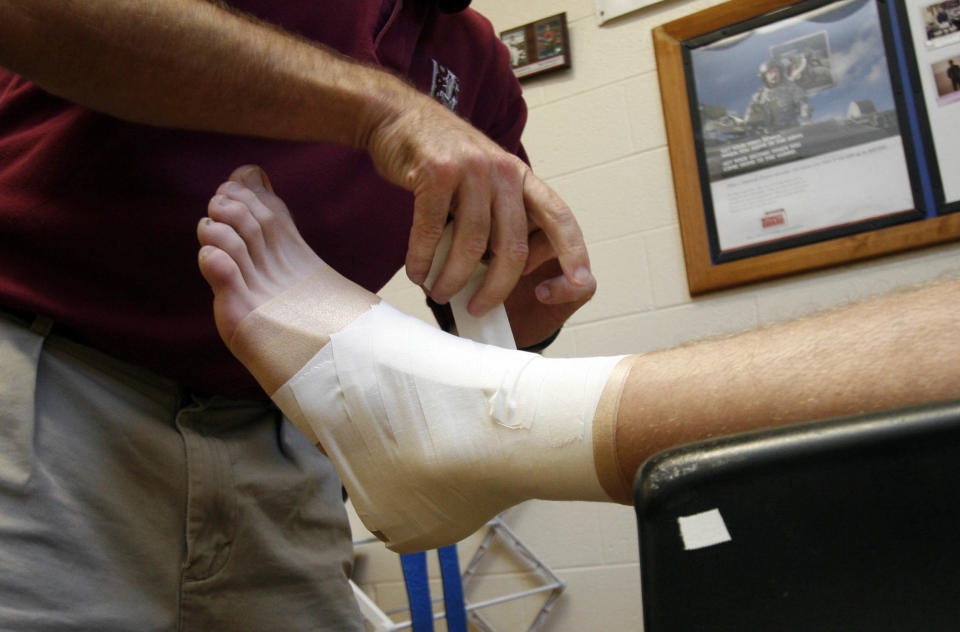
A certified athletic trainer graduates from an accredited college program, such as the University of Delaware’s or nearby West Chester University’s. College grads must also pass a board of certification exam and get a state license.
Having a program such as UD’s right here has long been beneficial to First State high school sports. Nineteen percent of Delaware’s high schools do not have an athletic trainer, according to the latest data from the National Athletic Trainers Association. Only six states have lower percentages – New Jersey (11 percent); Pennsylvania (13); Connecticut (13); Hawaii (13); Indiana (16); and Ohio (17).
First State Military Academy, the Early College School at Delaware State and Milford are other schools with football teams that have recently operated without one recently, according to the DATA, as have other schools that don’t have football.
“Overall, Delaware has actually been among the leaders in the country in having our schools, for the most part, having access to athletic trainers,” said Minutola, a SWAC member and DATA past president. “We’ve done well but we want to be great. There needs to be a mandate.”
Certification also now requires a master’s degree, Bley said, which can increase salary demands and may lead to a smaller pool of candidates.

Mike Hart, executive director of the Delaware Association of Athletic Directors and former Salesianum AD, said schools know the need for athletic trainers “is an issue” statewide but believes a major problem now is “there just aren’t enough out there,” he said.
Like many jobs involving sports, the evening and weekend hours can sometimes prevent qualified candidates from having interest, Bley said. Some schools also prefer not to contract out for full-time hours, hiring for 30-hour weeks. SMAC deems that “insufficient” and believes it has fed a high turnover rate, leading certified athletic trainers to pursue work in other settings such as physician’s offices or industrial sites, Keeney said.
2022's BEST:Top 100 players in Delaware high school football
“It’s hard to get people,” Bley said.
In 2021, the average annual salary for athletic trainers was $56,769 for those with a bachelor’s degree and $60,512 for those with a master’s, according to the NATA.
The hope is that schools pay athletic trainers salaries commensurate with what teachers receive. The main reason New Jersey leads the U.S. in athletic-training coverage at its high schools is because in 1999 its Department of Education passed Chapter 87, which recognizes an athletic trainer’s certificate the same as a teaching certificate. SMAC is pressing for a similar set-up in Delaware.

One benefit of contracting out with a local physical therapy outfit that has athletic trainers on staff is it provides a path to specialists in certain medical fields, Minutola said. But being on the actual school staff allows for more valuable familiarity with coaches, players and their families.
“Working as an employee for the school/district will allow for better rapport with teachers/administration,” one athletic trainer, who preferred not to be identified and is contracted through a physical therapy outfit, wrote in response to an email question.
“We will be recognized more by parents and the athletes as employees of the school and that will help us develop trust. We would be able to represent our schools rather than the PT company we work for. We would have more access and better communication with our athletes by being in the school, leading to better control of their care.”
That could also provide a better retention rate, the trainer added. Sure enough, several high schools in Delaware have full-time athletic trainers who’ve been on staff for several decades, such as William Penn’s Vinnie Ranalli, Salesianum’s Joe Szczerba, St. Elizabeth’s Tom Beddow, Caravel’s Marty Yuhas, Tatnall’s Fred Palfrey and recent Archmere retiree Jim Malseed.
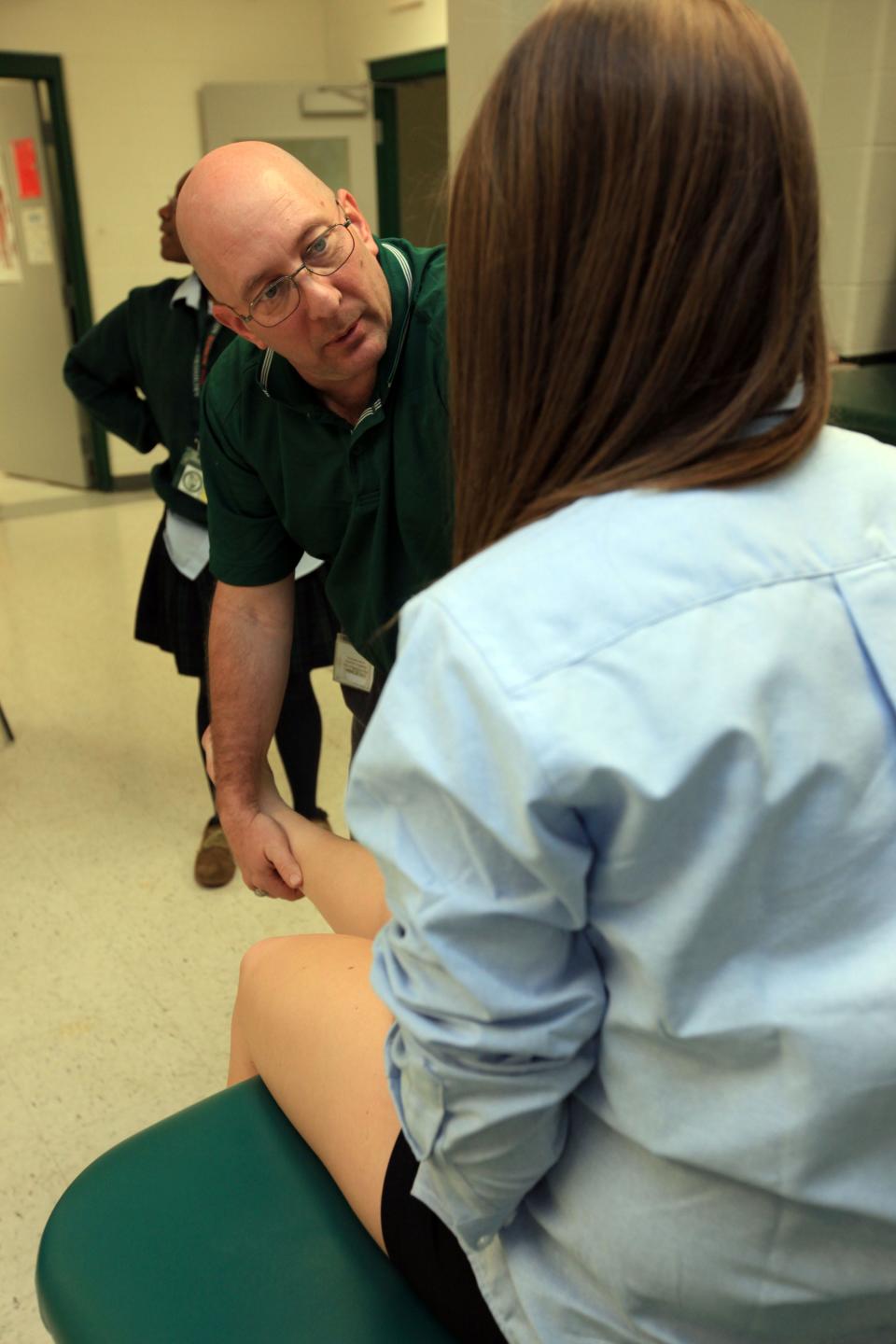
Kenney, a UD graduate who has worked at Laurel for 10 years, agreed that being employed full-time by the school or district is the “most advantageous” situation for student-athletes and athletic trainers but “we just want to make sure there’s full-time access, somebody who’s there.”
Palfrey and Tatnall, in fact, hired an additional athletic trainer for the Hornets’ home football games against Christiana and Glasgow in October knowing those visiting teams didn’t have one. In one of those games, Palfrey said, an opposing player lost consciousness after a play near his sideline.
“Luckily the athletic trainer was over there,” Palfrey said, “and I went over with our team doctor. With football, that’s why you need two [an athletic trainer on each sideline].”
That, to Palfrey, was also a clear example of why every school should have its own athletic trainer and the DIAA should continue to push the state to mandate it. It’s especially important, he said, because most injuries actually occur in practices, not games.
“It has to be a requirement,” Palfrey said. “You require school nurses. But the most important part – the possibility of violent collisions [in an athletic situation] – you don’t require an athletic trainer. I know it costs money, but . . .
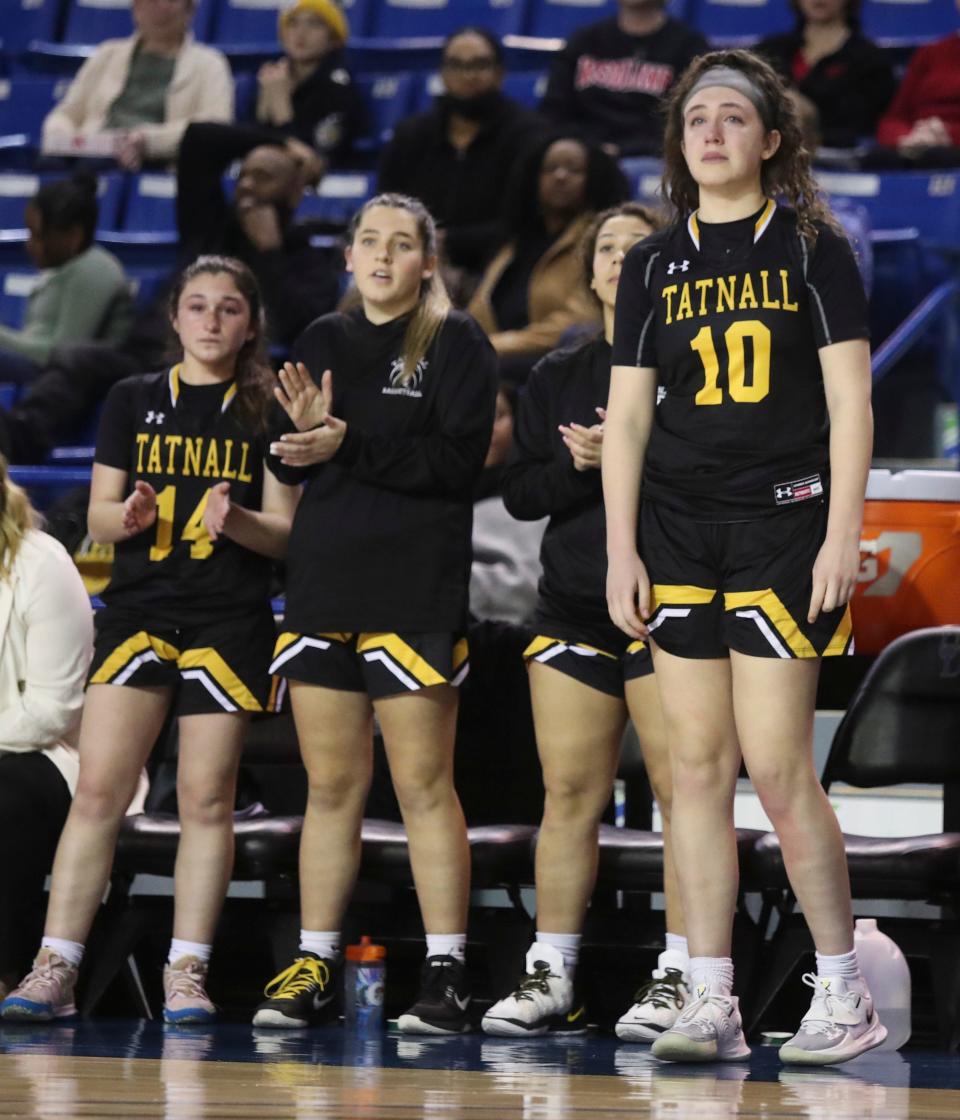
“Full-time is the best,” Palfrey added, “because you can take care of stuff during the day, at night. You can see them in the morning when they come to school.”
Habbert called Christina’s decision to place a full-time athletic trainer at each high school “a huge step in recognizing and appreciating the value of those individuals. We couldn’t put our student-athletes’ well-being in the hope that an outside vendor would find us people. We couldn’t rely on that anymore.”
Hamlin’s potentially fatal injury was a vivid reminder of how imperative medical intervention can be in an athletic setting.
Minutola said just watching the situation unfold on TV gave her the act-fast, rescue-mode sense that trainers feel kick in whenever an athlete doesn’t get up.
“It doesn’t get any more obvious,” said Minutola, a former soccer standout at Marywood University. “Just because this happened in the NFL doesn’t mean that this can’t happen anywhere else. The risk is even higher at high schools when there may not be a trained medical professional there.
“We have to be ready for this. We’re talking about people’s lives. We’re talking about their health.”
Have an idea for a compelling local sports story or is there an issue that needs public scrutiny? Contact Kevin Tresolini at ktresolini@delawareonline.com and follow on Twitter @kevintresolini. Support local journalism by subscribing to delawareonline.com.
This article originally appeared on Delaware News Journal: Athletic trainers cardiac arrest DIAA Hamlin Delaware high schools

